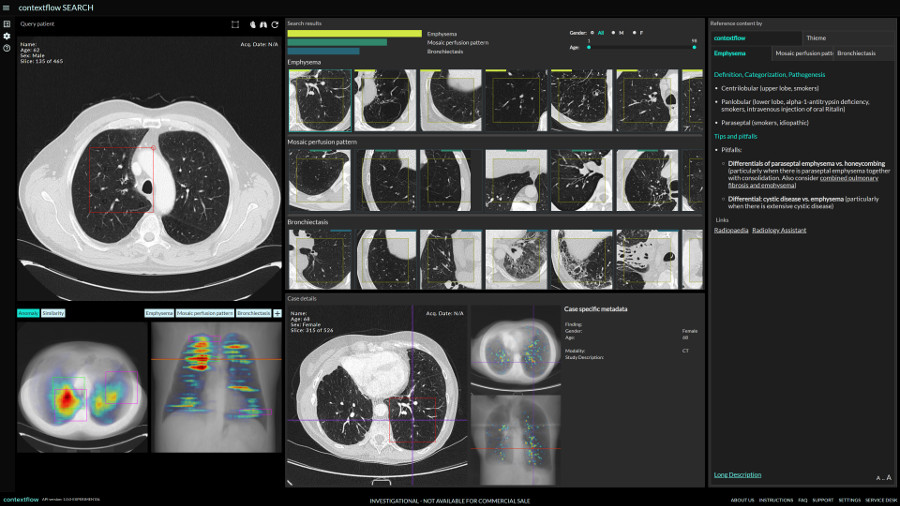
Providing an Efficient 3D Image-Based Search Engine for Radiology Workflows
Sebastian is a radiologist at the Medical University of Vienna. He makes reports of patients’ medical images that help clinicians identify findings and make diagnostic decisions. Every day he is responsible for reviewing more than 45,000 images and interpreting the information they contain. This task can be quite quick if he knows what he is looking for, but in approximately 20% of cases, he needs to search for additional information, asking other colleagues for help, paging through reference books or performing internet searches. This tedious process can take up to 20 minutes for each case.
And a radiologist’s workload is ever increasing. In 2010, a radiologist looked at 15,000 images daily, one third of the current workload. A global radiologist shortage and increasing complexity in diagnosis complicate matters even further, leading to delays, missed findings and high overtime expense. Since fast, high-quality diagnosis is paramount to patient care, hospitals simply cannot afford this scenario.
The radiology workflows pilot led by contextflow aims to reduce the time to diagnosis in radiology departments while improving reporting quality with consistent, reproducible results. This will be achieved with contextflow SEARCH: an efficient 3D image-based search engine designed to improve radiology workflows.
With this tool, radiologists can search regions of interest in 3D images and access relevant information to help them with diagnosis. SEARCH looks for cases with visually-similar patterns in a large database, displaying reference cases and statistics. The system also includes additional information helpful for differential diagnosis from medical literature or reference databases, all within seconds.
The pilot “Radiology workflows” is part of the theme “Industrialization of healthcare services” tackled by the BigMedilytics project. ATOS, the Medical University of Vienna and Hospital Universitario Puerta de Hierro-Majadahonda (HUPHM) are also participating in this pilot.

